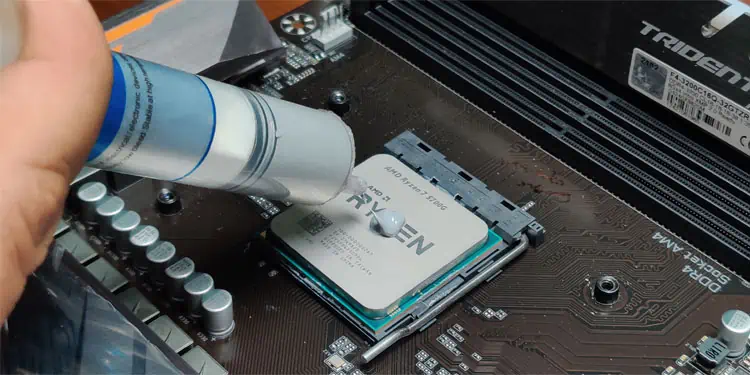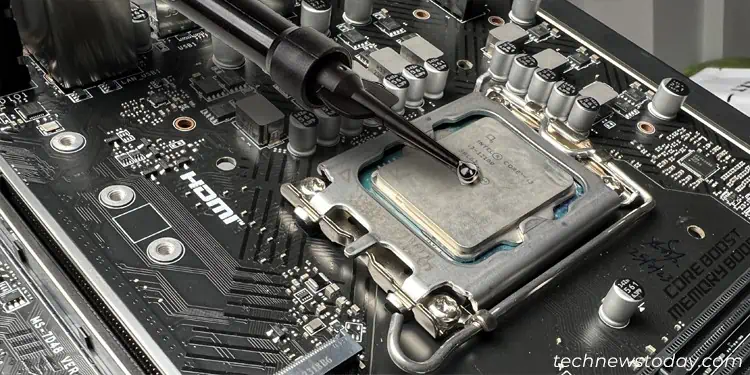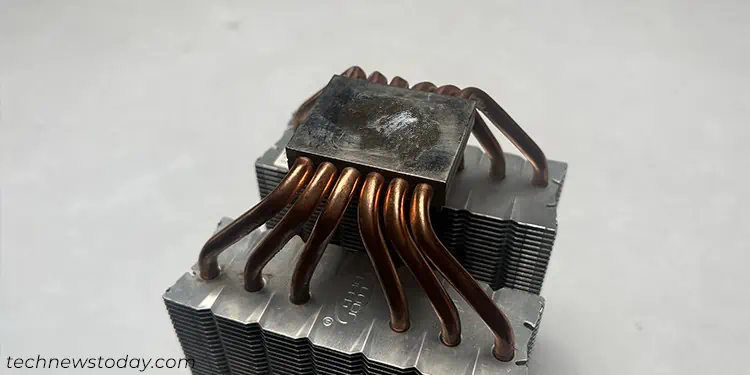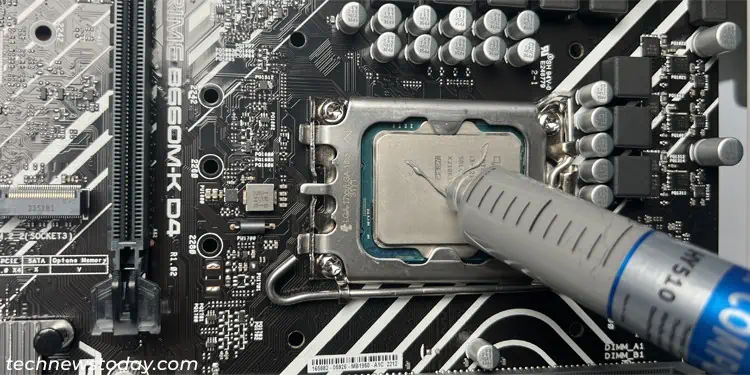Thermal paste mainly comes in two variants — standard thermal pastes that use a base matrix (like silicon-based) and liquid-metal-based ones.
PC enthusiasts praiseliquid metalas thebest Thermal Interface Material (TIM) for cooling. Some users have even claimed that it drops the temperature by whooping 10°C or more.
However, it is quiterisky to apply liquid metal paste without proper precautions and experience. So, depending on your situation, it may be better to use other regular thermal pastes instead.

What is Thermal Paste?
Standard thermal pastes use a base matrix together with a thermally conductive filler to provide a fluid pasty consistency. Most common thermal compounds are silicon-based.
But you’ll also find carbon-based, ceramic-based, diamond-carbon-based, and metal-based compounds on the market.
The matrix usually contains silicones, acrylates, urethanes, and epoxies, which are thermal insulators. The paste has to rely on the fillers that make up 70-80% of its composition to provide thermal conductivity.

These fillers are either one or a couple of — aluminum oxide, zinc oxide, boron nitride, aluminum nitride, and carbon micro-particles. Depending on the type of the thermal paste, it may contain additional substances like silver and aluminum dust (metal-based), diamond powder (diamond carbon-based), and so on.
What is Liquid Metal?
Unlike the regular thermal pastes I’ve discussed above, liquid metal directly uses metal that stays liquid at room temperature instead of relying on a base matrix.
The metal is usually an alloy of gallium, indium, and tin, where the gallium is the main component.

Since all the thermal interface material is a metal, it has much higher thermal conductivity than other types of thermal paste and allows better dissipation of heat to the cooler.
This thermal interface material is especially preferred by PC enthusiasts who want tooverclock their CPUand want thelowest possible temperature for their CPU.
Differences Between Thermal Paste and Liquid Metal
While standard thermal pastes and liquid metals have the same working mechanism, their composition brings about certain differences that make them stand apart from one another.

